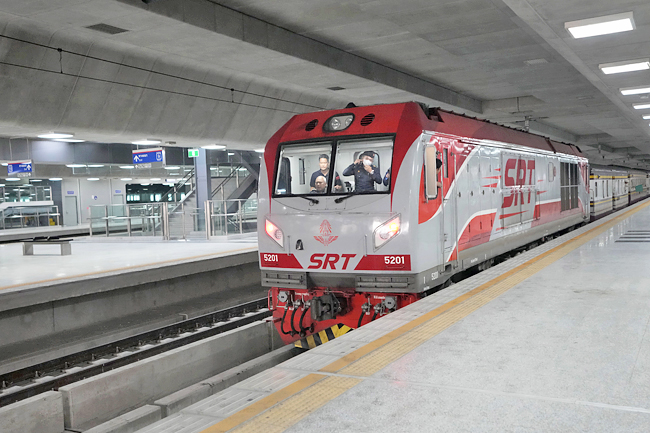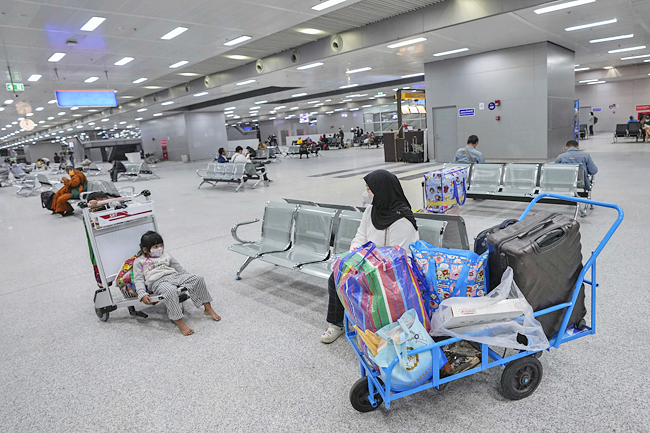BANGKOK (AP) – Thailand ushered in a new age of train travel on Thursday as Southeast Asia’s biggest railway station officially began operations.
The government said the huge, modern development on the edge of central Bangkok will bolster the country’s position as a regional hub and boost its economy.
It’s officially called Krung Thep Aphiwat Central Terminal, a name bestowed by the king. But to most people it’s more likely to be known simply as Bang Sue Grand Station, after the part of Bangkok where it’s located.
The cost of the new terminal, including the station, elevated train tracks and a connecting station for Bangkok’s mass transit system, is around USD1 billion, according to State Railway of Thailand Traffic Operations Director Takun Indarachome.
Almost all of Thailand’s long-distance domestic and international rail services will pass through the new terminal, on which work began 10 years ago. The first train out of the new station was bound for Sungai Kolok, on Thailand’s southern border with Malaysia.
Many Thais, however, are lamenting the shunting aside of the previous terminal, Hua Lamphong Station on the edge of Bangkok’s Chinatown in the middle of the capital.




The classic station, with its high-ceilinged waiting room, has hosted generations of travellers, ranging from rural workers looking for jobs in the city to backpacking tourists headed south to chill at seaside resorts.
All is not lost for the nostalgic, however. Several lines – running locally and to the east – will still wend their way to the older, more central station.
For the time being at least, 62 trains will use it daily.
The construction of the new terminal coincided with major projects expanding rail networks in Thailand and other countries in Southeast Asia, largely spurred by China’s Belt and Road infrastructure initiative and its high-speed rail technology.
Passengers will encounter a four-storey station covering almost 30 hectares.
Many Bangkokians are already familiar with the premises because its cavernous halls were used last year as the main venue for the government’s free COVID-19 vaccination programme.
Trains will come and go on 24 tracks at 12 platforms, with the station able to manage up to 40 trains at the same time, according to the government. At peak times it can handle up to 600,000 passengers per day, more than 10 times the capacity of Hua Lamphong station, it said.
In Bang Sue’s ultra-modern control room, banks of panels and screens oversee operations and make sure that everything is running smoothly.
Video from more than 120 security cameras is monitored using artificial intelligence. In public areas, smart robots are on hand to assist puzzled passengers, and smart wheelchairs can carry handicapped people without human help.
“Today is the first day after they moved the service from Hua Lamphong and lots of people did not know that yet, so the place looks empty,” said Theerawat Peangda, who was waiting to catch a train south for a holiday break. “But I think this station is okay, very nice and convenient.”
Hua Lamphong, in contrast, looks more to the past than the future.
To walk through the neo-Renaissance portal of the station, designed by Italian architects and opened in 1916, is to step back in time to a simpler era. For a while, it even appeared that it would be relegated to become a museum.
“I don’t want them to move the grand station. I’d rather it stayed here,” Prathuang Ruengsamut, 68, said earlier this week as he waited for a train at Hua Lamphong. “They just need to renovate this place a little bit and it’ll be fine.”
Such deep affection for the old station may well have saved it. When plans were mooted to tear it down, there was a public outcry, and the authorities backtracked.
“Had they closed it and turned it into a museum it would have become lifeless. But if we let people keep using it, it’s much better,” said Thanong Thooptian, 61, who regularly takes trains from Hua Lamphong.






